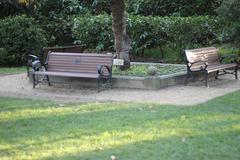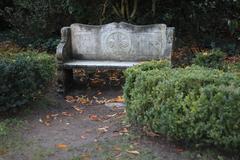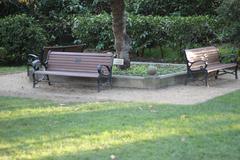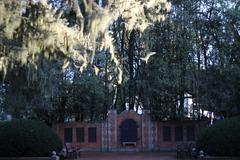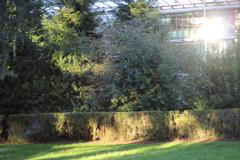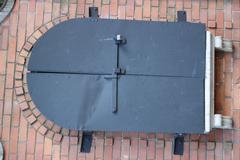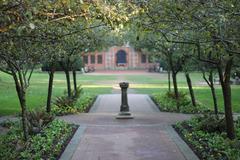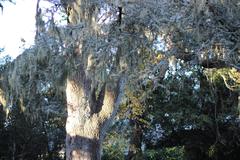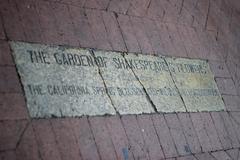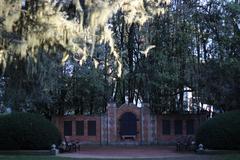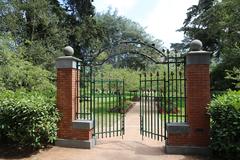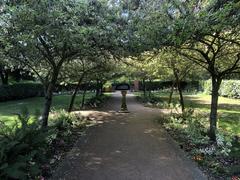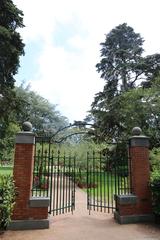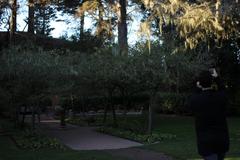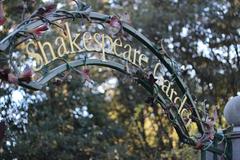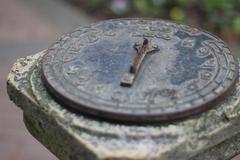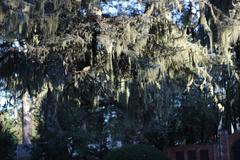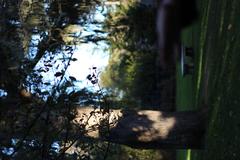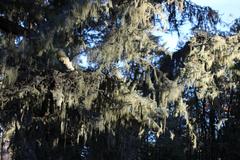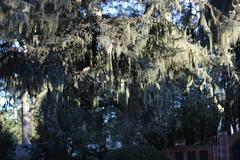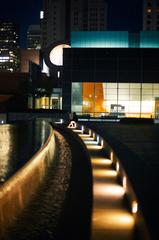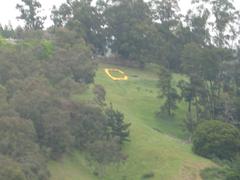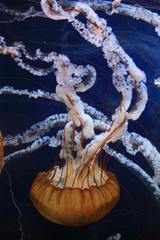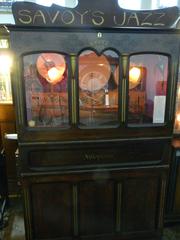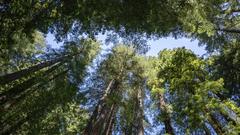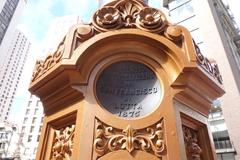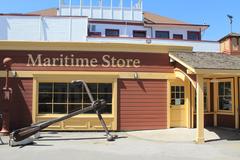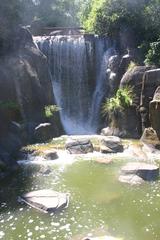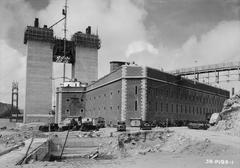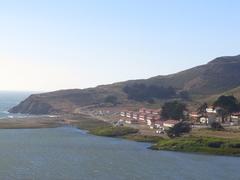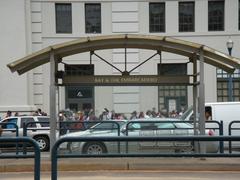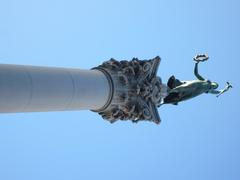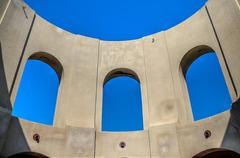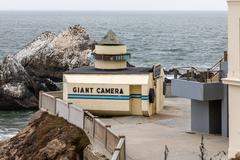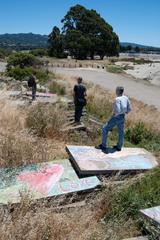
Visiting Hours, Tickets, and History of Shakespeare Garden in San Francisco
Publication Date: 25/07/2024
Introduction to Shakespeare Garden
Nestled within the iconic Golden Gate Park, the Shakespeare Garden in San Francisco stands as a testament to the timeless beauty of nature and the enduring legacy of William Shakespeare’s literary genius. Conceived in 1928 by Alice Eastwood, then the Director of Botany for the California Academy of Sciences, the garden was envisioned as a ‘Garden of Shakespeare’s Flowers,’ a space where the flora mentioned in Shakespeare’s works could be cultivated and appreciated (The Clio). With the support of the California Spring Blossom and Wildflower Association, this vision was brought to life, transforming a meadow into the lush garden that visitors enjoy today.
The Shakespeare Garden is not merely a collection of plants; it is a living anthology of Shakespeare’s works. The garden features a variety of plants and flowers directly referenced in his plays, such as hollyhocks and flowering crabapple trees, each accompanied by plaques with corresponding quotes (SF Illusions). This botanical and literary integration offers a unique opportunity for visitors to connect with Shakespeare’s world tangibly and beautifully.
Designed to reflect the Elizabethan era’s love for symmetry and order, the garden’s layout, overseen by John McLaren, the superintendent of Golden Gate Park, includes axial paths, a central sundial, and a stone bench dedicated to Alice Eastwood. One of the garden’s most notable features is its entrance, marked by a wrought-iron gate with a gold-lettered sign. Hidden within an alcove in the garden wall is a bronze copy of a 17th-century bust of William Shakespeare, donated by the mayor of Stratford-Upon-Avon (Atlas Obscura).
Throughout the year, the garden’s seasonal variety ensures that it is always a delightful place to visit, whether for a peaceful retreat, a picturesque wedding venue, or a learning experience through guided tours and educational programs (SF Shakes). This guide aims to provide comprehensive information to make your visit to the Shakespeare Garden an unforgettable experience.
Table of Contents
History and Significance of Shakespeare Garden, San Francisco
Origins and Establishment
The Shakespeare Garden in San Francisco’s Golden Gate Park was conceived in 1928 by Alice Eastwood, who was then the Director of Botany for the California Academy of Sciences. Eastwood’s vision was to create a “Garden of Shakespeare’s Flowers,” a space where the flora mentioned in William Shakespeare’s works could be cultivated and appreciated. This vision was brought to life with the support of the California Spring Blossom and Wildflower Association, which transformed a meadow in the park into the garden we see today (The Clio).
Development and Design
The garden’s development was overseen by John McLaren, the longstanding superintendent of Golden Gate Park. McLaren was instrumental in the installation of irrigation systems and the preparation of the soil, ensuring that the garden could sustain the diverse range of plants mentioned in Shakespeare’s plays. The garden was designed to reflect the Elizabethan era’s love for symmetry and order, creating a space that not only showcased botanical beauty but also paid homage to the historical context of Shakespeare’s works (The Monumentous).
Botanical and Literary Significance
The Shakespeare Garden is unique in that it features a variety of plants and flowers that are directly referenced in Shakespeare’s writings. This includes hollyhocks, flowering crabapple trees, and many others that bloom each spring. Each plant is accompanied by plaques with corresponding quotes from Shakespeare’s plays, making the garden a living anthology of his work. This botanical and literary integration provides visitors with a unique opportunity to connect with Shakespeare’s world in a tangible way (SF Illusions).
Cultural and Community Impact
Since its inception, the Shakespeare Garden has become a beloved feature of Golden Gate Park, attracting both residents and visitors from around the world. It serves as a tranquil retreat within the bustling city of San Francisco, offering a peaceful environment for relaxation and contemplation. The garden is also a popular venue for weddings and other special events, adding to its cultural significance and community value (The Clio).
Notable Features and Artifacts
One of the garden’s most notable features is its entrance, which is marked by a beautiful wrought-iron gate with a gold-lettered sign welcoming visitors. Inside, the garden is laid out with axial paths and includes a sundial at its center. A stone bench dedicated to Alice Eastwood sits near the far edge of the garden, providing a place for visitors to rest and reflect. Additionally, hidden within an alcove in the garden wall is a bronze copy of a 17th-century bust of William Shakespeare, donated by the mayor of Stratford-Upon-Avon, Shakespeare’s birthplace in England. This bust is occasionally displayed for public viewing, adding a historical artifact to the garden’s literary and botanical elements (Atlas Obscura).
Seasonal Splendor and Visitor Activities
The Shakespeare Garden is a spectacle throughout the year, with each season bringing its own unique charm. Spring is particularly vibrant, with tulips, daffodils, and cherry blossoms creating a picturesque setting. Summer follows with a lush display of roses and lavender, while autumn brings warm hues of amber and gold. Even in winter, the garden retains a quiet beauty with evergreens and winter-blooming plants. This seasonal variety ensures that the garden is always a delightful place to visit, no matter the time of year (SF Illusions).
Educational and Cultural Programs
The garden also hosts a variety of activities that enhance the visitor experience. Open-air performances of Shakespeare’s plays are a highlight, offering a unique way to experience his works in a natural setting. Guided tours provide insights into the botanical and literary significance of the garden’s plants, making each visit both educational and enjoyable. These programs help to foster a deeper appreciation for Shakespeare’s contributions to literature and the natural world (SF Shakes).
Visitor Information
Visiting Hours
The Shakespeare Garden is open daily from 9 AM to 5 PM. These hours may vary seasonally, so it is advisable to check the Golden Gate Park’s official website for the most current information.
Tickets and Admission
Admission to the Shakespeare Garden is free, making it an accessible destination for all visitors. No tickets are required for entry.
Travel Tips
The garden is easily accessible by public transportation. Several Muni bus lines stop near Golden Gate Park, and there is also parking available for those driving. Comfortable walking shoes are recommended as the garden paths can be uneven.
Nearby Attractions
While visiting the garden, consider exploring other nearby attractions in Golden Gate Park, such as the Japanese Tea Garden, the de Young Museum, and the California Academy of Sciences (Golden Gate Park).
Accessibility
The Shakespeare Garden strives to be accessible to all visitors. Paved paths throughout the garden make it wheelchair accessible. There are also benches available for resting, making it a comfortable visit for those with mobility issues.
Legacy and Preservation
The Shakespeare Garden’s legacy is one of cultural enrichment and community engagement. It stands as a testament to the enduring relevance of Shakespeare’s works and the timeless beauty of nature. Efforts to preserve and maintain the garden ensure that future generations can continue to enjoy this unique space. The garden’s design, featuring plants from Shakespeare’s plays, not only honors the past but also inspires a connection to literature and nature that is both profound and personal (The Monumentous).
Conclusion
The Shakespeare Garden in San Francisco’s Golden Gate Park is more than just a collection of plants; it is a living tribute to one of the greatest writers in history. Its combination of botanical beauty, literary significance, and cultural impact makes it a must-visit destination for anyone exploring San Francisco. Whether you’re a literature lover, a nature enthusiast, or simply looking for a peaceful retreat, the Shakespeare Garden offers a unique and enriching experience that is sure to leave a lasting impression (The Clio).
FAQ
What are the visiting hours for Shakespeare Garden? The garden is open daily from 9 AM to 5 PM, with seasonal variations possible.
Are there guided tours available? Yes, guided tours are available and offer insights into the botanical and literary significance of the garden’s plants.
Is there an entrance fee? No, admission to the Shakespeare Garden is free.
How do I get to the Shakespeare Garden? The garden is accessible by public transportation, with several Muni bus lines stopping near Golden Gate Park. Parking is also available for those driving.
What other attractions are nearby? Nearby attractions include the Japanese Tea Garden, the de Young Museum, and the California Academy of Sciences.
Summary and Final Thoughts
The Shakespeare Garden in San Francisco’s Golden Gate Park is more than just a botanical collection; it is a serene retreat, a literary homage, and a cultural treasure. From its origins in 1928, inspired by Alice Eastwood’s vision, to its current status as a beloved feature of the park, the garden has continuously offered a unique blend of natural beauty and literary significance (The Clio). As visitors stroll through the garden, they are transported to the world of Shakespeare, with each plant and flower serving as a living testament to his works.
The garden’s thoughtful design, overseen by John McLaren, and its seasonal splendor ensure that it remains a delightful destination year-round. Whether visiting for a leisurely walk, a guided tour, or a special event like a wedding, the Shakespeare Garden provides a peaceful and enriching experience (SF Illusions). Its accessibility and free admission make it an inclusive space for all to enjoy.
In a bustling city like San Francisco, the Shakespeare Garden offers a tranquil escape, a place where literature and nature intersect beautifully. It stands as a testament to the enduring relevance of Shakespeare’s works and the timeless appeal of a well-curated garden. Future generations will continue to find inspiration and solace in this unique space, ensuring that the legacy of the Shakespeare Garden endures (The Monumentous).
Sources and Further Reading
- The Clio. History and Significance of Shakespeare Garden, San Francisco. Retrieved from The Clio
- SF Illusions. The Bard’s Blossoms: Discovering Shakespeare’s Enchanted Garden in the Heart of SF. Retrieved from SF Illusions
- Atlas Obscura. Shakespeare Garden, Golden Gate Park. Retrieved from Atlas Obscura
- SF Shakes. Shakespeare Garden in San Francisco. Retrieved from SF Shakes
- The Monumentous. Shakespeare Garden. Retrieved from The Monumentous
